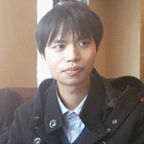從刪除 linked-list node 看程式設計的品味
Published in
4 min readFeb 22, 2017
偶然看到 Linus 在 TED 的演講,對多數人來說不是什麼吸引人的演講。不過從工程師的角度來說,滿有共鳴的。若要說 Linus 和一般工程師有什麼特別的不同,大概是他相當長時間專注在一件事上吧。用比較流行的說法,就是很有恆毅力!
演講的 14:27 開始,Linus 以刪除 singly-linked list node 為例,舉了兩個例子對照,說明何謂好品味。作為練習,我用 C 實作影片裡的兩個版本,加上我自己平常的寫法,共計寫了三版。這裡有完整的程式,後面逐一說明。另外,大概是為了方便聚焦說明,影片內的版本假設要刪除的目標一定在 list 內,我也基於同樣的假設實作。
Linus 舉的初學者版
void remove_list_node_v1(List* list, Node* target)
{
Node* prev = NULL;
Node* current = list->head; // Walk the list
while (current != target) {
prev = current;
current = current->next;
} // Remove the target by updating the head or the previous node.
if (!prev)
list->head = target->next;
else
prev->next = target->next;
}
最後需要用 if 處理不同的情況,顯得複雜。
我的版本
void remove_list_node_v2(List* list, Node* target)
{
// Check the special case first.
if (target == list->head) {
list->head = list->head->next;
return;
} // Walk the list and remove the target if it exists.
for (Node* current = list->head; current->next;
current = current->next) {
if (current->next == target) {
current->next = current->next->next;
break;
}
}
}
先用 early return 排除特例,再處理常例,方便閱讀。不過對這個問題來說,這和上面的版本沒差多少。
Linus 舉的有品味版
void remove_list_node_v3(List* list, Node* target)
{
// The "indirect" pointer points to the *address*
// of the thing we'll update.
Node** indirect = &list->head; // Walk the list, looking for the thing that
// points to the node we want to remove.
while (*indirect != target)
indirect = &(*indirect)->next; *indirect = target->next;
}
想通 head 和 next 並沒有不同,我們的目標其實是「更新原本指向 target 的變數」,所以只有一個情況要處理。
結語
不知不覺寫了 18 年的程式,沒想到移除 singly-linked list node 可以寫得更精簡。和半年前看到 intrusive list 的時候有類似的感受:一但覺得習慣的作法已經夠好了,就不會再進步。在保持務實的同時,仍要提升自己的品味,才能持續地精進。
2017–02–26 更新
看到一些朋友的討論後,有了更具體的想法。從第三個例子衍生幾個有趣的點:
- 對多數人來說第三版有比較好讀嗎?這依開發者背景而定。開發 Linux kernel、常和指標打交道的人,大概會覺得比較好讀。開發一般應用程式、常用高階語言的人,大概覺得比較難讀。
- 這和 object-oriented programming、functional programming 類似,還不習慣這類思維前,會覺得不好讀;習慣後會覺得好讀。比方說 FP 的 map、filter、reduce 也是如此 (可以參考 Python 的例子)。
- 前兩個例子是從物件的角度思考,所以有分 head 和 non-head;第三個例子從「要更新什麼位置的資料」思考,於是察覺要更新的是同一類型的資料,不用分 head 和 non-head 處理。習慣 OOP 的思考方式後,有時反而將問題變複雜了,如何有效率地刪除資料結構節點是類似的例子。
